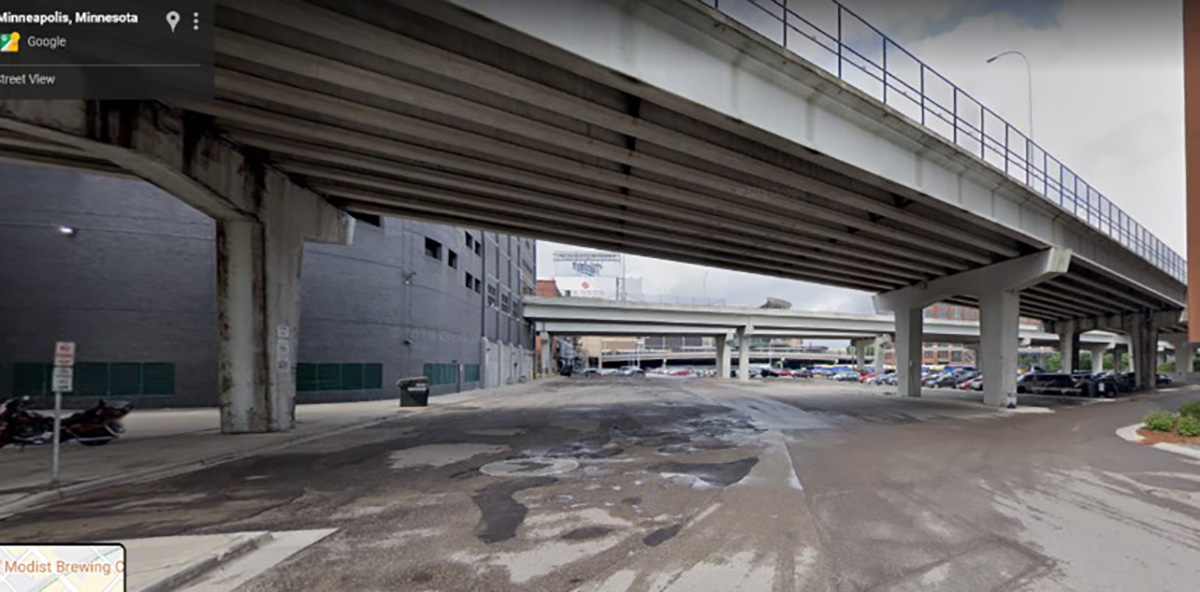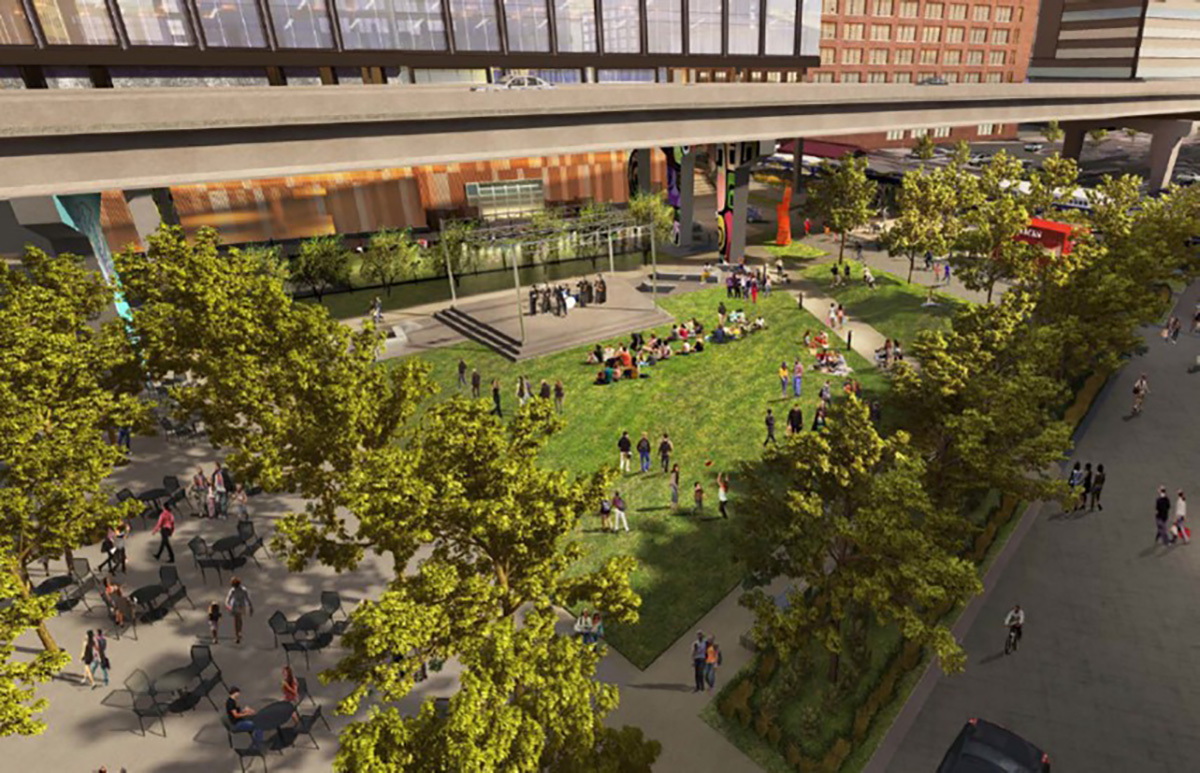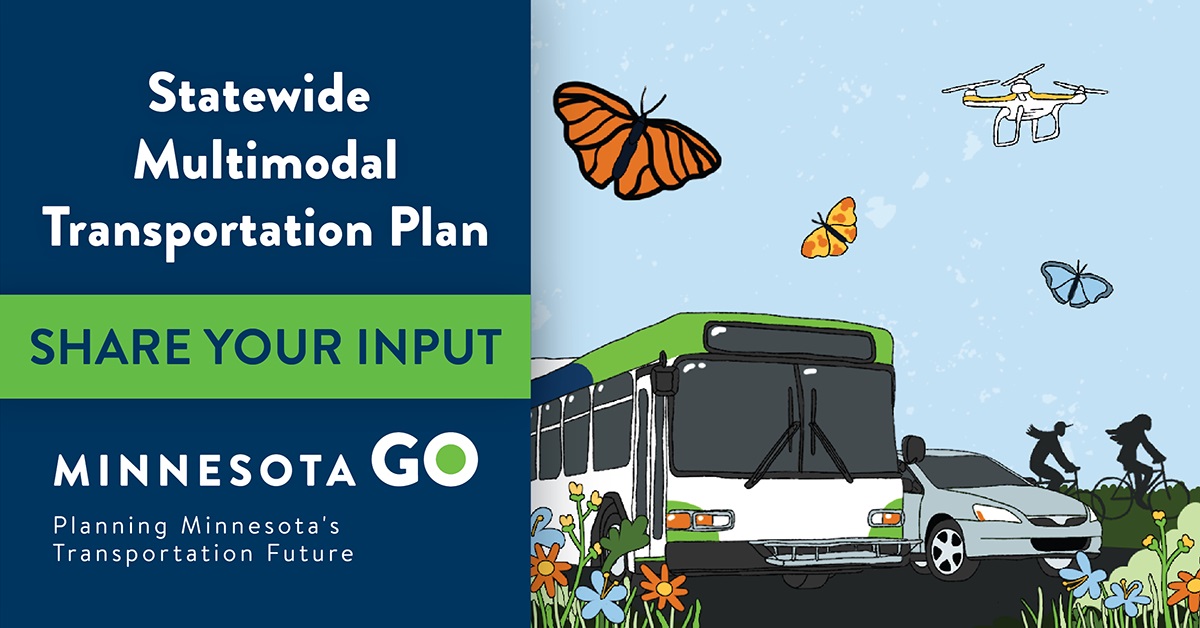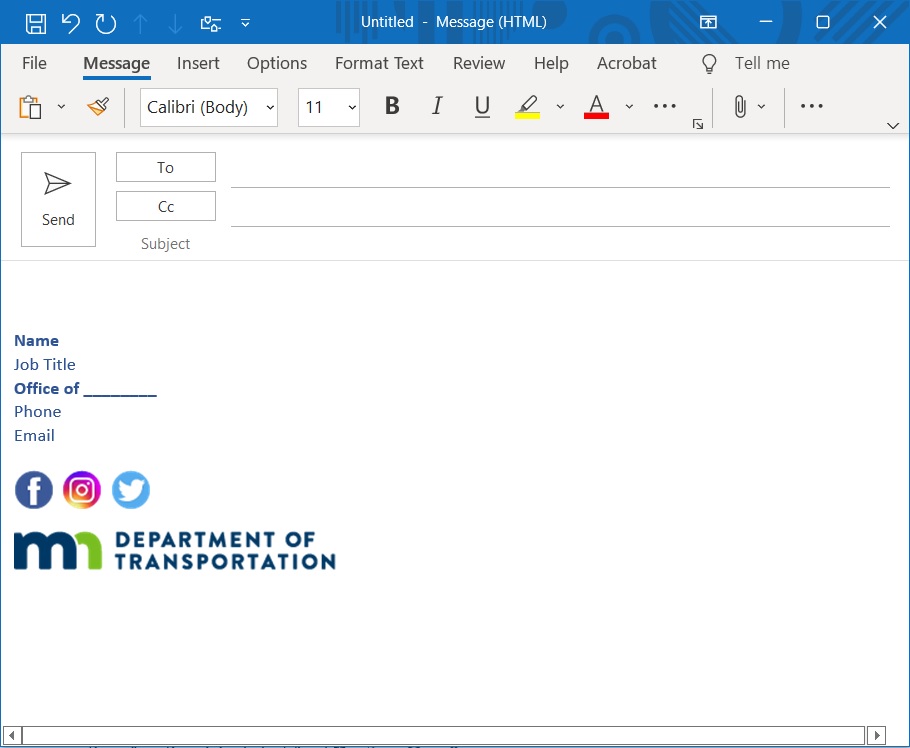 |
|

|
 |
TABLE of CONTENTS
|
Duluth police use MnDOT building for tactical training |
By Margie Nelson, D1 public affairs coordinator

The Duluth Police Tactical Response Team and the St. Louis County Sheriff Emergency Response Team train at a MnDOT-owned property June 29. Training sessions like this provide law enforcement with the opportunity to run through high-risk scenarios in a controlled environment. Photo by Margie Nelson
|
When the Duluth Police Department learned that MnDOT had acquired a vacant farmhouse in neighboring Hermantown, they contacted District 1 staff to learn about what the plans were for the building. They are often on the lookout for vacant property to use for training opportunities for the tactical response team, and this one fit the bill.
MnDOT acquired the property at the corner of Hwy 53 and Hwy 194 in the last year as the future site of the Hermantown truck station. The plan is to demolish the existing home and barn as part of the project. This residential structure was ideal for training because of its size – 32 rooms – and the fact that the team had permission to cause damage while practicing breaking down windows and doors, using chemicals, approaching with specialized vehicles and deploying explosives.
The tactical response teams are deployed in high-risk situations, such as responding to situations with barricaded and dangerous suspects, executing dangerous and high-risk arrest or search warrants, and responding to hostage situations. Training sessions provide them the opportunity to run through these scenarios in a controlled environment.
The Duluth Police Department and the St. Louis County Sheriff made a formal request to use the building for a coordinated training.
“MnDOT needed to take steps to ensure the property was safe for the exercises,” said Perry Collins, the assistant district engineer for operations. “Approval was a coordinated effort between District 1, the Office of Land Management, Office of Environmental Stewardship and Chief Counsel’s office.”
After working through issues of liability and assumed risk, MnDOT allowed the two agencies to use the property. The training took place June 29, with about 50 people at the event, including the Duluth Police Tactical Response Team, the St. Louis County Sheriff Emergency Response Team, leadership of both agencies, emergency medical technicians and actors to fill roles in the training. The day went well, and both agencies expressed gratitude for the inter-governmental partnership.
|
 |
|

|
|

|
 |
TABLE of CONTENTS
 |
Airspace agreement makes way for future public space in Minneapolis |
|
By Jessica Oh, Strategic Partnerships director

BEFORE: MnDOT right of way near Target Field in downtown Minneapolis will be turned into a plaza for a wide range of artistic, cultural and community-based events. Image via Google Maps |
A new public space, North Loop Green, will be joining Minneapolis’s North Loop neighborhood in 2024, giving new life to a MnDOT right of way.
The project is a culmination of three years of planning by MnDOT’s Offices of Land Management, Sustainability and Public Health, and Chief Counsel, all collaborating closely with the developer, city and project planners to execute the agency’s first-ever public space pilot that includes commercial uses. During the 30-year airspace lease, developer Hines will invest $5 million in public space improvements and perform operations and maintenance of the site.
The space is adjacent to mixed-use development as well as Target Field, making it well-situated for both events and daily activities. The plaza will feature a green space that will be programmed year-round with a wide range of artistic, cultural and community-based events for both area residents and visitors to enjoy, including outdoor movie nights, live performances and seasonal festivals. Amenities will include a dog exercise area, outdoor exercise equipment, garden, and food and beverage vendors. The development and plaza will also serve as a mobility hub, with easy access to the nearby Northstar Line, Cedar Lake Trail and ABC Ramps. There will also be 225 bicycle parking spaces to support active transportation.
Temporary Outdoor Dining Permits during the pandemic (Executive Order #20-70) paved the way for MnDOT to develop a new section in the Right of Way Manual to allow limited commercial use of MnDOT-owned land through airspace leases.
Nationally, there has been a growing movement to reclaim underused transportation infrastructure and reimagine it as a public space, including:
North Loop Green is an initial pilot as MnDOT explores new types of non-transportation uses for rights of way that align with the agency’s statewide planning goals. The agency is increasingly exploring alternative uses for right of way projects that support public health, sustainability, economic development and quality of life through public-private partnerships organized by MnDOT’s Center for Community Connections and the Strategic Partnerships Program.

AFTER: The new North Loop Green will transform an underused space in the downtown Minneapolis into a lively plaza in 2024. Image courtesy of Hines |
|
 |
|

|
 |
TABLE of CONTENTS
 |
Staffing updates |

Tim Sexton. |
Tim Sexton appointed interim assistant commissioner of new division
After six years in other positions at MnDOT, Tim Sexton has started a new role as interim assistant commissioner for Multimodal Planning & Program Management and Sustainability & Public Health. This newly created division combines two previously separate divisions, giving the agency closer coordination of expertise and resources in these areas. Sexton’s appointment follows the retirement of Tim Henkel, who had led the Multimodal Planning & Program Management Division since early 2007.
Sexton has been with MnDOT since 2014, serving in the roles of assistant commissioner for Sustainability and Public Health, director for the Office of Transit and Active Transportation and assistant director for the Office of Environmental Stewardship. Prior to joining MnDOT, he held several environmental and climate policy roles with the Washington State Department of Transportation.

Shelly Meyer. |
Shelly Meyer appointed acting director of Freight and Commercial Vehicle Operations
Shelly Meyer has been appointed the acting director for the Office of Freight and Commercial Vehicle Operations. She will serve in that role for up to a year, replacing Bill Gardner, who recently retired after serving as OFCVO’s director for more than 12 years.
Meyer is in her 35th year with MnDOT, a career that includes serving most recently as the OFCVO assistant director and Commercial Vehicle Operations Section director. She also has held positions as an IT supervisor and permits supervisor. Meyer has expertise in commercial vehicle operations and for-hire specialized transportation services, managed five program areas within the office and led implementation of IT projects within the CVO section. She also served as an MP in the US Army.
Meyer has a B.S. in Business Administration and an M.S. in Computer Information Systems.

Ginny Crowson. |
Ginny Crowson begins role as new CAV-X director
Ginny Crowson returned to MnDOT on July 6 as the next CAV-X director. Prior to taking this position, she worked for the agency in other roles for 17 years and worked in consulting and at the University of Minnesota’s Center for Transportation Studies.
Crowson’s experience with transportation technology includes research, deployment and education across many different topics, among them safety, traveler information, road weather management, emergency services, tolling, traffic operations and connected and automated vehicles.
“I am really excited to have Ginny back at MnDOT leading our Connected and Automated Vehicle and Intelligent Transportation System efforts,” said Jay Hietpas, Operations Division assistant commissioner. “Her deep knowledge and communication skills will advance MnDOT’s efforts across Minnesota.” |
 |
|

|
 |
TABLE of CONTENTS
 |
Draft 2022 statewide multimodal transportation plan released for public comment |
|
By Dani Walchuk, Office of Transportation System Management

A draft of the updated Statewide Multimodal Transportation Plan is available for review and public comment through Sept. 18. MnDOT updates the plan every five years. |
A draft of the updated Statewide Multimodal Transportation Plan is now available for review and public comment. The SMTP is the highest-level policy plan for transportation in Minnesota, providing policy direction to for the future of the state’s transportation system. MnDOT updates the plan every five years.
The review period is open through Sept. 18. Comments can be made either online at MinnesotaGO.org or by emailing stateplans.DOT@state.mn.us.
The SMTP sets objectives, performance measures and strategies. These help MnDOT meet the 16 goals for transportation laid out in Minnesota statute and pursue and promote the Minnesota GO Vision for a multimodal transportation system that maximizes the health of people, the environment and our economy over the next 20 years.
The 2022 update of the SMTP includes the following new climate, equity and health commitments:
- Pursue a shift to more climate-friendly transportation options.
- Implement equity—including MnDOT’s transportation equity statement of commitment—in transportation decision-making.
- Improve health outcomes and reduce disparities in Minnesota through land use coordination, active transportation and other efforts.
The draft plan is the result of more than two years of collaboration with the public, stakeholders and partners. Engagement included surveys, forums, listening sessions, presentations and opportunities to attend community events. In all, MnDOT staff had more than 6,500 touchpoints with Minnesotans as part of the planning process.
“The SMTP is not just a MnDOT plan. The policy direction in the 2022 SMTP is an invitation to join MnDOT to build a bold new transportation future together,” said Philip Schaffner, director of Statewide Planning.
Agency staff will incorporate feedback into a final draft expected later this year. Once it’s adopted, the ongoing work will focus on shifting the plan’s policy direction into specific tasks implemented by MnDOT, stakeholders and partners.
Visit MinnesotaGO.org to learn more about the 2022 SMTP and MnDOT’s other statewide planning efforts. To request an opportunity to discuss the plan with your office or group, email Hally Turner. |
 |
|

|
 |
TABLE of CONTENTS
 |
Updated guidelines provide best practices for email signatures |
By Adam Oie

A sample email template is available on iHUB. |
Email signatures are like digital business cards, providing individualized contact information but also following a specific template that fits the broader organization’s brand identity.
For the sake of professionalism and clarity, it’s important to follow a few common guidelines, just as you would with business cards. This consistency helps MnDOT build a stronger brand and greater public trust. The best practices include both content and design. Review the guidelines below to see if your email signature meets the agency’s recommended best practices for content and design.
Content
Your signature tells recipients who you are and how they can contact you. It should include the following information:
- Your name
- Your position and office
- Your telephone number, email address and physical office address
- MnDOT logo
- Optional: preferred pronouns, MnDOT social media links
Design
- Font: The State of Minnesota has selected Calibri Bold and Calibri Regular as standard fonts for employee use in Word documents, PowerPoint presentations, email signatures and other “business uses.”
- Color: Minnesota Blue (hex #2F5496) is the official color for email signatures. This color is part of the core of state government’s brand identity and should appear prominently on all communication pieces. Using Minnesota Blue provides consistency and ensures that email signatures meet color contrast standards.
- Logo: The agency logo formatted for signatures, available on iHub, has been optimized to a reduced file size and provides consistent spacing between the logo and text. The logo should not be scaled or cropped.
Avoid these common mistakes
Overly personalized signatures can detract from the purpose of communicating who you are and what role you have at the agency, reducing credibility and professionalism.
- No email signature or missing information.
- Personal quotes: Your signature should only contain information related to your work at MnDOT, not inspirational quotes or other text of that nature.
- Distracting colors, fonts or backgrounds: Avoid colorful typography and distracting backgrounds that can make emails a challenge to read by individuals with low vision and other visual impairments. They also create inconsistent branding, which can be confusing when engaging with citizens and communities around the state.
To learn more, visit the email signature guidance page on iHUB, which has a downloadable template.
|
 |
|

|
|

|
 |
TABLE of CONTENTS
 |
On the Job: From equine science to construction management, Bailey Wolff brings wide experience to work site |
By Kiran Sjoberg

Bailey Wolff is a construction management grad 1 in District 7's Mankato Office. Submitted photo |
Bailey Wolff is a construction management grad 1 in District 7. This position is geared toward future supervisors and project engineers, but without the professional rotations or licenses required of engineers. She has been working for MnDOT since February 2020.
What made you interested in this profession?
I grew up in a construction family. My dad and uncle took over a bituminous paving company from my grandpa and most of my extended family either worked there or in another form of construction.
What has been your career path?
My career started while I was in college going to be a veterinarian. During the summer, I would work for my dad running parts and small odds and ends. As I progressed into my third year of college, I had a change of heart and decided that I wanted to pursue a career in construction. I graduated from the University of Minnesota- Crookston in 2017 with a degree in business and equine science. After that, I went to Mankato State University, where I graduated in 2018 with a degree in construction management, and then got a job at Duininck, Inc. I spent two years working as a foreman with their highway paving crews. This allowed me to meet MnDOT inspectors from several different districts, so when a job posting opened up in the District 7 Mankato office, I jumped at the opportunity.
What is your favorite part about what you do?
There is always something different to do, something new to learn, and a puzzle to solve every day on a construction site. I enjoy problem solving and working through the process of finding the best solution for the situation.
What are the biggest challenges of your job?
Honestly, not jumping into a piece of equipment! Since I grew up constantly around equipment, it gets hard not to jump in and help.
What does a typical workday look like for you?
A typical workday usually starts with coffee. Next, I usually follow up with the contractor to see where they left off from the day before or I touch base with the crew to see what we are going to start on next. There really is no “typical day” for my position. You just have to see where the day takes you.
Do you or a co-worker have an interesting job to share with readers? Send us your ideas, and we’ll contact you for more information.
Recent employee profiles:
|
 |
|

|
 |
TABLE of CONTENTS
 |
U.S. Bike Route 20 is now 'Prairie Lakes Bicycle Route' |
By Joseph Palmersheim

The Wobegon Bike Trail near Holdingford is part of the new U.S. Bike Route 20. Members of the public recently chose the name “Prairie Lakes Bicycle Route” through an online vote. Photo by Paul Stafford |
Minnesota’s new 188-mile bike route connecting St. Cloud to Moorhead now has a name.
“Prairie Lakes Bicycle Route” received 34 percent of the 3,655 votes cast in response to the MnDOT’s invitation to the public to help pick a name for the route. “Glacier Lakes Bicycle Route” came in a close second, with 33 percent of the votes cast.
Here’s how the other name choices fared:
- MiddleSota Bicycle Route (21 percent)
- Rivers to Prairies Bicycle Route (7 percent)
- Towns and Fields Bicycle Route (2 percent)
These names, which highlight geographic features along the bike route, were suggested by participants attending a MnDOT event last year. Voting closed July 12.
The U.S. Bicycle Route System is a network of numbered cross-country routes. Currently there are more than 18,000 miles of U.S. Bicycle Routes in 31 states.
U.S. Bicycle Routes combine existing roads and shared-use paths to create routes that connect some of Minnesota’s most beloved places. MnDOT aims for these routes to be easy to follow, scenic in nature, and on the safest available existing roads and paths. MnDOT's first choice is to locate routes on paths separate from car and truck traffic. If this is not feasible, the preference is for road facilities with bicycle lanes or wide shoulders.
Learn more about U.S. Bike Route 20 and other Minnesota bike routes on the MnDOT bike page. |
 |
|

|
 |
TABLE of CONTENTS
 |
Remembering the 'Superstorm,' 35 years later |

July 23 marked the 35th anniversary of the Twin Cities Superstorm of 1987. This weather event saw widespread flooding in the wake of more than 10 inches of rain overnight and into the early morning of July 24. One of the affected areas was Interstate 494 at Penn Avenue, as captured in this MnDOT photo. Learn more about the Twin Cities Superstorm on the DNR website.
|
|
 |
|
| |
|



